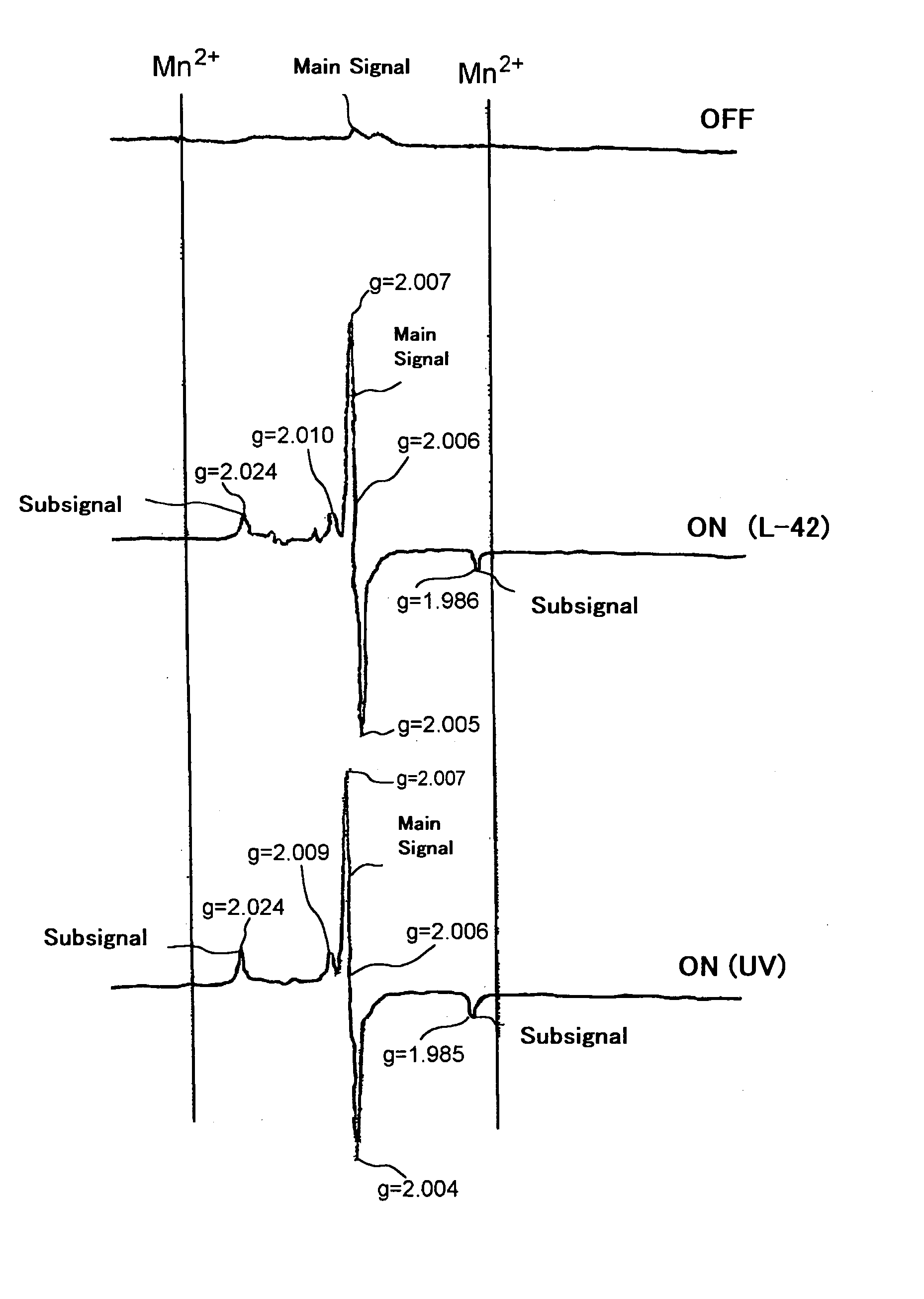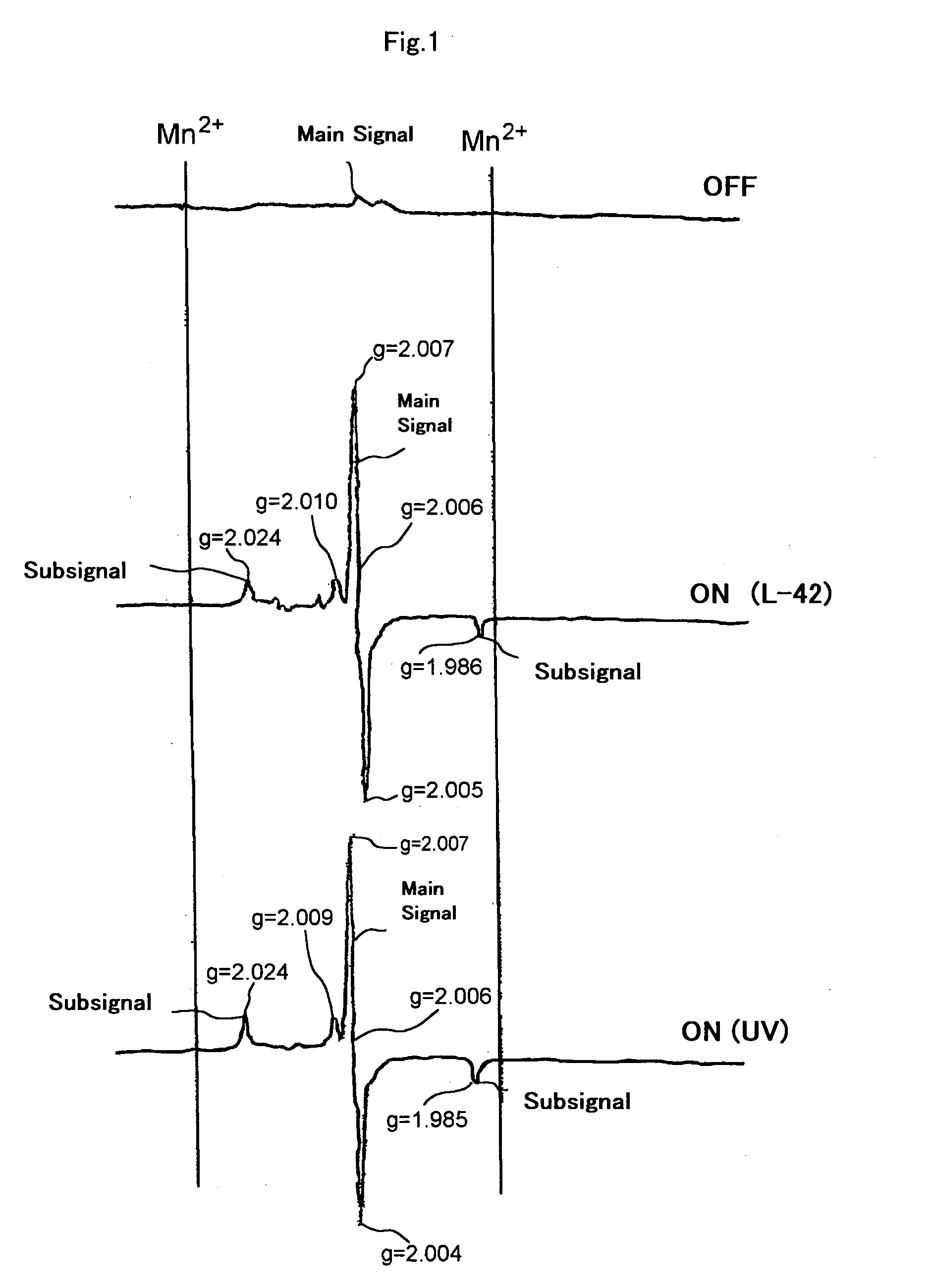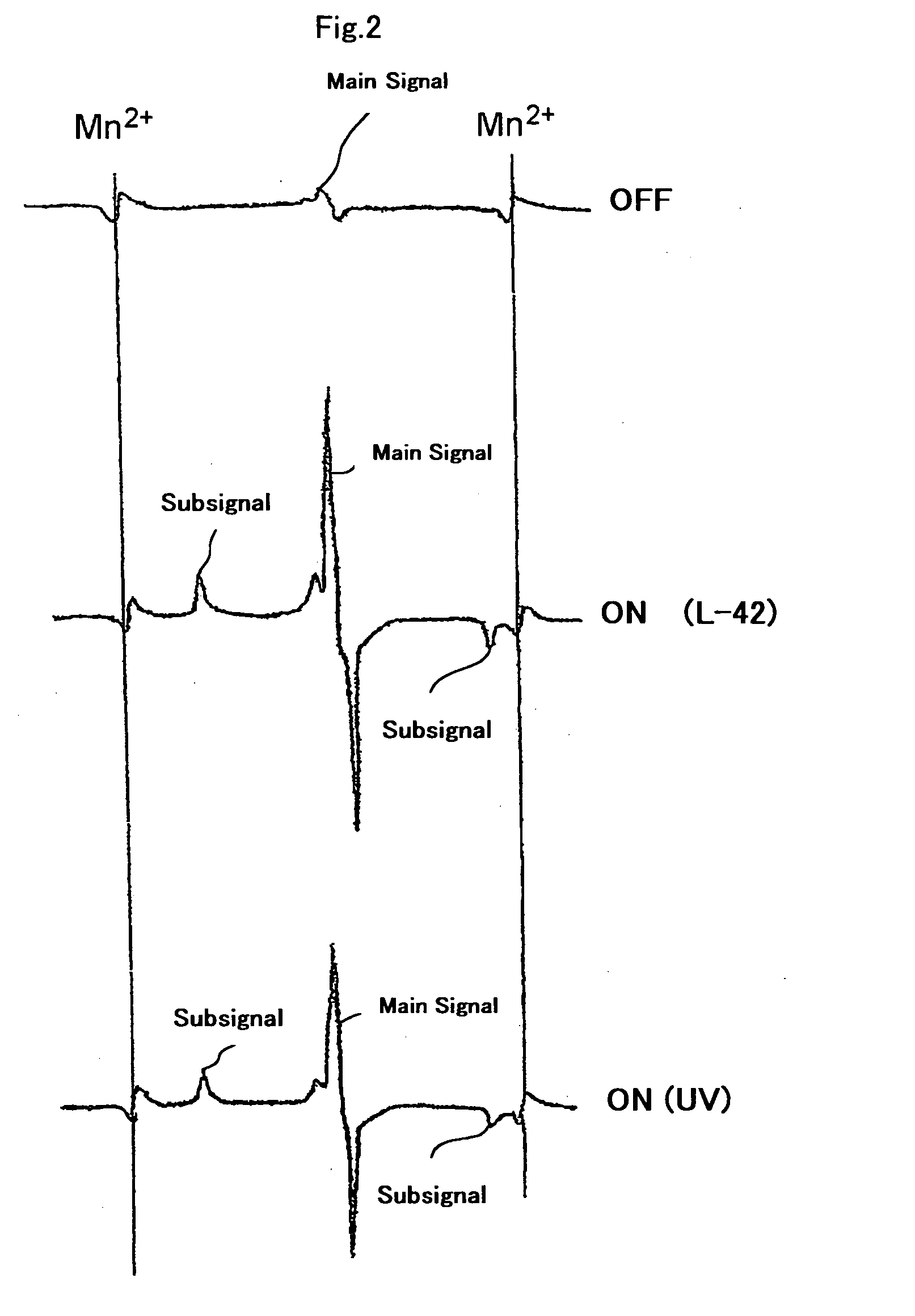Bleaching composition and method of bleaching tooth
a composition and tooth technology, applied in the field of bleaching composition and tooth bleaching, can solve the problems of insufficient time and cost required to protect the gums, inflamed gums and contracting during the bleaching process, and deterioration of gums,
- Summary
- Abstract
- Description
- Claims
- Application Information
AI Technical Summary
Problems solved by technology
Method used
Image
Examples
embodiment 1
[0087] Dental Bleaching Test
[0088] A 20 mg quantity of the powder prepared in Reference Example 3 was added to 0.5 g of a commercial dental bleaching gel (containing 21 percent urea peroxide), the components were thoroughly kneaded, and the mixture was uniformly applied to a thickness of 1 mm on teeth. Following the application, the coating was irradiated five times with light having a component of greater than or equal to 420 nm for a period of 1 minute each time with a commercial photopolymerization device (Apollo 95E made by DMD). Coloration of the teeth prior to and after treatment was measured with a VITA shade guard (reference colors); the results are given in Table 1. Results equivalent to those shown in Table 1 were obtained when irradiation with light comprising a component of greater than or equal to 420 nm was conducted continuously for 5 minutes with a D-LUX10 made by Dentrade as photopolymerization device.
embodiment 2 (
Light-Emitting Diode)
[0091] The same test was conducted as in Embodiment 1 with the exception that the photopolymerization device employed as light source was replaced with a blue light-emitting diode.
[0092] The blue light-emitting diode comprised one row of four blue LEDs (model NSSB450, made by Nichia Kagaku Kogyo (K. K.)) illuminated by applying 3.7 V to each light-emitting diode. The light irradiation period was 20 min. The coloration of the teeth prior to and after light irradiation was measured in the same manner as in Embodiment 1. The results are given in Table 1.
embodiment 3 (
Light-Emitting Diode)
[0093] The same test was conducted as in Embodiment 1 with the exception that the photopolymerization device employed as light source was replaced with a green light-emitting diode.
[0094] The green light-emitting diode comprised one row of four green LEDs (model NSSG450, made by Nichia Kagaku Kogyo (K. K.)) illuminated by applying 3.7 V to each light-emitting diode. The light irradiation period was 20 min. The coloration of the teeth prior to and after light irradiation was measured in the same manner as in Embodiment 1. The results are given in Table 1.
PUM
| Property | Measurement | Unit |
|---|---|---|
| Temperature | aaaaa | aaaaa |
| Nanoscale particle size | aaaaa | aaaaa |
| Wavelength | aaaaa | aaaaa |
Abstract
Description
Claims
Application Information
 Login to View More
Login to View More - R&D
- Intellectual Property
- Life Sciences
- Materials
- Tech Scout
- Unparalleled Data Quality
- Higher Quality Content
- 60% Fewer Hallucinations
Browse by: Latest US Patents, China's latest patents, Technical Efficacy Thesaurus, Application Domain, Technology Topic, Popular Technical Reports.
© 2025 PatSnap. All rights reserved.Legal|Privacy policy|Modern Slavery Act Transparency Statement|Sitemap|About US| Contact US: help@patsnap.com



